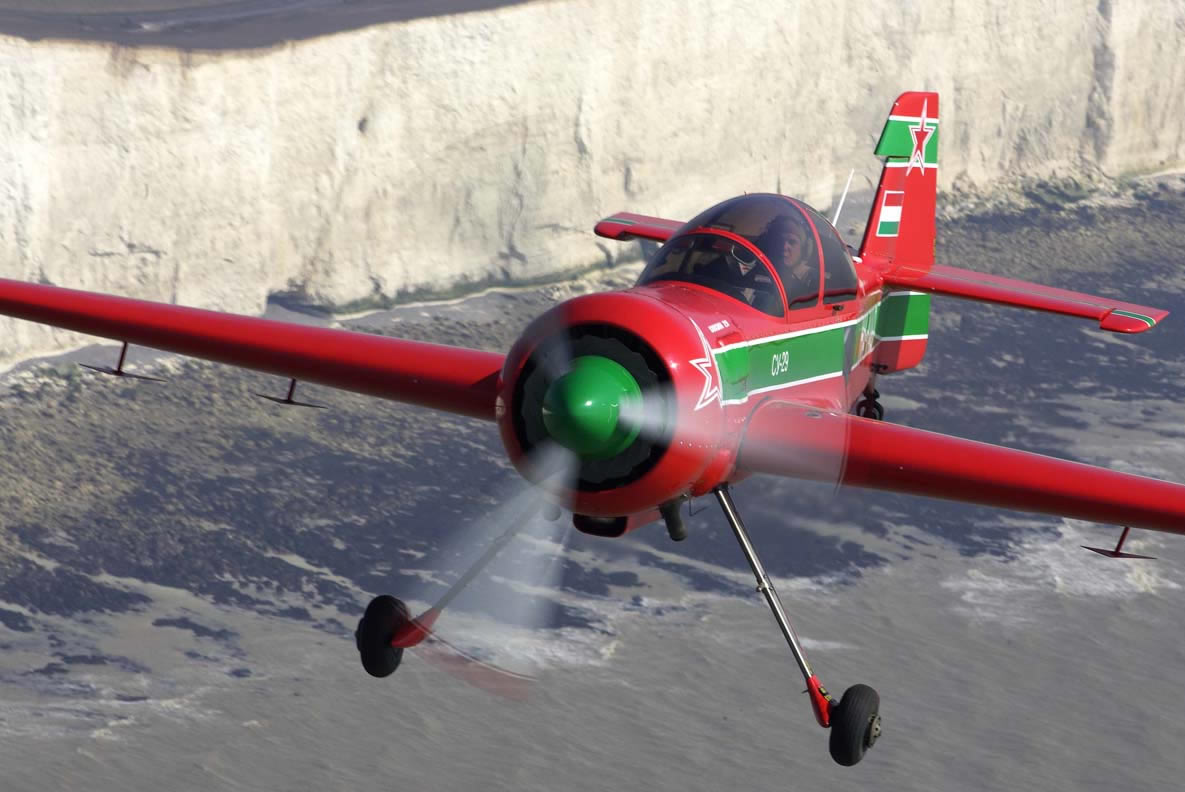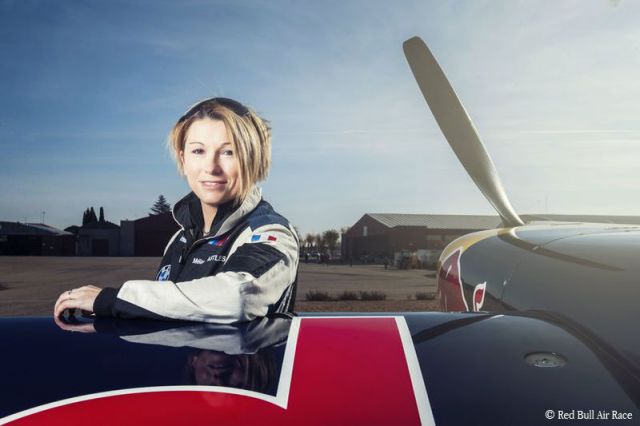British Aerobatic Academy

Aircraft
Extra 200 - The British Aerobatic Academy has a variety of aircraft available but their main work horse is the Extra 200. They will shortly be getting a second 200. The Extra 200 is very high performance having the same rate of roll, control response and G limits as the Extra 300 but is approx half the hourly rate, making it economical and allowing their students to do more flying for their money.
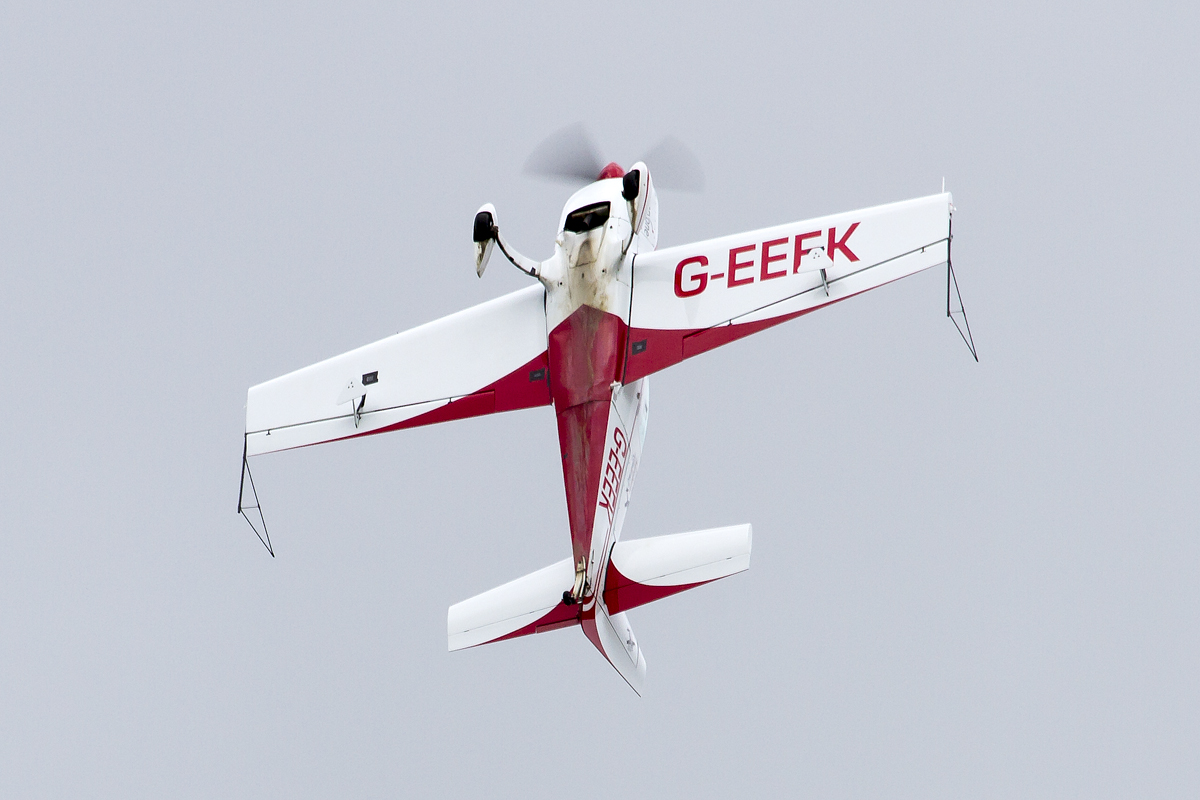
Extra 200 Specifications
The Extra 200 is a two tandem seat unlimited aerobatic aircraft. The aircraft is fully capable of flying any known aerobatic figure and is competitive at Advanced level national and international competition. The Extra 200 is a low-winged monoplane with a tail wheel landing gear and is smaller and lighter than the Extra 300 bhaving the same wing and tail as the single seat Extra 300s. The Extra 200 is stressesed and certified for ±10 G with an ultimate load of approx 23g It is powered by a fuel injected Lycoming AEIO-360-A1E which produces 200hp (149kW) and has a 3-blade constant speed MT propeller made of laminated wood encased in glass-fibre reinforced plastic.
Although more expensive per hour than a CAP 10C or a Cessna 150 aerobat, the performance means that students get dramatically more "Bang for their Buck". To take an extreme example, compared with a Cessna Aerobat, you can achieve more in 30 minutes in the Extra than in over an hour in the Cessna because the rate of climb is so much better and it is not necessary to accelerate prior to rolling. We can enter a stall turn at any speed between 80 and 200 kts!
Aerobatic courses
Beginners Level Course Syllabus
Average time required 8 hours ground school 8 hours flying.
The beginner’s course provides an understanding of the following:
Airmanship
- Collision avoidance
- Nuisance reduction
- Navigation
Human Factors
- Motion sickness
- Orientation
- The physiological effects of G and how to manage this safely
- GLOC and how to guard against it
Engine & Airframe
- Knowledge of limitations & safety aspects
- Pre-flight procedures
- The different operating practices that are recommended with aerobatic aircraft
Competition Craft
- An understanding of the competition box
- Competition rules for Beginner Comps
- Entering the exiting the box
- An understanding of the judging criteria for the beginners sequence and selected figures from the Standard sequence.
- The ability to compete at Beginners level at a BAeA event.
Handling Skills
- Recovery from a loss of control, including:
- Recovery from Unusual Attitudes
- Wing rocks
- Slow flight – Level, climbing, turning & descending
- Advanced steep turns
- 45 lines
- Loops
- Ballistic Roll
- Aileron Roll
- Half Cuban
- Barrel Roll
- Stall Turn
- Half Roll off the top of a Loop
- Quarter Clover, rolling downwards
- BAeA Beginner Sequence
Standard/Sportsman level Course Syllabus
Average time required 8 hours ground school 8 hours flying Pre-course qualification - The standard course presumes an understanding and competency equivalent to attending and passing our beginners course. The Standard course provides an understanding of the following:
Airmanship
- Energy management
- Orientation
- Effects of wind height and temperature
- Gate heights and speeds
Human Factors
- The physiological effects of stress, fatigue, dehydration, mental attitude and personal limitations.
Engine & Airframe
- Knowledge of limitations & safety aspects
- Pre-flight procedures
Competition Craft
- Ability to stay within the box
- Competition rules for Standard Comps
- An understanding of the judging criteria for standard figures.
- The ability to pass a BAeA standard level flight evaluation.
Handling Skills
- Recovery from a loss of control, including:
- Energy management
- Climbing & Descending 45° lines
- Quarter Clover rolling downwards
- Wingover
- Humpty
- Reverse Half Cuban
- Goldfish
- Recovery from mishandled Stall Turn
- Stall Turn with ¼ roll down
- Split-S
- Two point Roll
- Four point Roll
- Hesitation Loop
- Inverted turns
- BAeA Standard known Sequence
Formation Flying Syllabus
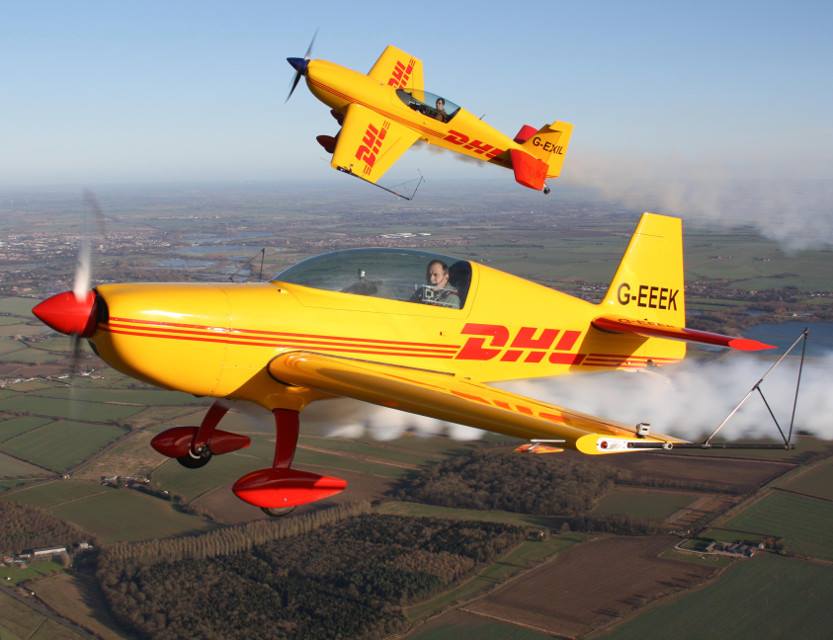
Definitions (CAP 403)
Close formation is defined as when an aircraft is flying in close proximity to another aircraft in such a manner as to require the following aircraft to take all external visual references solely from the lead aircraft. Close formation leading is defined as being totally responsible for all aspects of the safety, terrain clearance, positioning and handling for a number of aircraft that are formating in close proximity to the lead aircraft.
Basic - Gentle formation manoeuvring where the bank angle should be limited to approximately 30 degrees and the pitch angle to 30 degrees. Formation manoeuvring should be smooth and progressive.
Intermediate - Formation manoeuvres, including gentle wingovers, with pitch and bank angles limited to approximately 60 degrees. Formation manoeuvring should remain smooth and progressive. However, the formation may be required to undertake more rapid changes in pitch and bank angles during the flight.
Advanced - Formation manoeuvring where there is no limit to bank angle or pitch angle (Aerobatics).
Tailchase is defined as a number of aircraft following a leader in loose proximity, in line astern, whilst the leader carries out a series of manoeuvres of an aerobatic or semi- aerobatic nature. Each aircraft in turn will generally follow the leader's flight path but retain a high degree of individual decision making over the exact path taken. Separation distances vary from 50 to 200 metres.
Aerobatic Experience Flights/Aerobatic Joy Rides
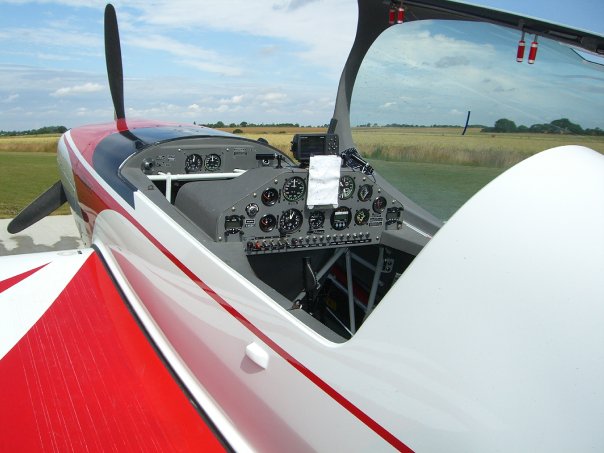
Aerobatics are the ultimate adrenaline rush. An aerobatic experience flight will certainly amuse any adrenaline junky making it the perfect gift. If you would like to purchase an aerobatic flight experience, please call 0771 2864413
Here at British Aerobatic Academy you are able to experience the thrill of aerobatics. British Aerobatic Academy’s aerobatic instructor has years of aerobatic competition flying and is currently competing in the British aerobatic championship at advanced level.
Aerobatic experience flight in an Extra 200 aircraft
Experience an aerobatic joy ride in an Extra 200 aircraft. British Aerobatic Academy fly an Extra 200 aerobatic aircraft, one of the world’s most uncompromising competition aerobatic aircraft which is capable of flying all known aerobatic manoeuvres, and many unknown aerobatic manoeuvres! The Extra 200 is highly manoeuvrable with full span ailerons giving it a 360° per second rate of roll. The aircraft is certified to +-10G and has an ultimate strength of +-23G – far more than the human body can stand.
Our aerobatic training aircraft looks very similar to the Red Bull Air Race planes, so you will get a taste of what it's really like. The aerobatic flying experience will be tailored to meet your needs and you will land totally exhilarated. The skill in flying a successful Aerobatic experience or trial lesson is to give the exhilaration without terrifying or making the student / passenger ill. You will land wanting more! Of course more is available!
The Extra 200 is a powerful and capable aircraft, unlike many other aircraft, little time will be wasted climbing to height, it gets there very quickly!For the pilots amongst you, the most significant and most striking quality is it’s extreme responsiveness and agility. It has a symmetrical wing with no washout or dihedral and flies equally well inverted or erect!
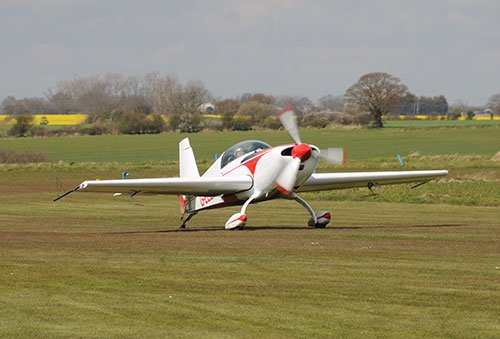
Contact:
British Aerobatic Academy is based at Bourn airfield, which is located 13 km (8.1 mi) west of Cambridge, Cambridgeshire, England. Coordinates: 52°12′38″N 000°02′33″W
Telephone: 07712864413
Email Adrian.Willis@BritishAerobaticAcademy.com
For additional information you can go to: britishaerobaticacademy.com
Source: British Aerobatic Academy. Tanks to: Adrian Willis.
All images are property of British Aerobatic Academy. Video: Youtube







